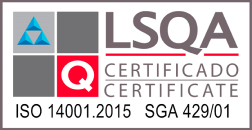Indeed, the BenMAP system is a modeling tool developed by the United States Environmental Protection Agency (EPA) to assess the public health impacts of short or long-term exposure to air pollution from PM10, PM2.5, O3, SO2, among other pollutants. This software uses an exposure-based modeling approach to estimate the impacts on human health through relative risks (concentration-response functions) and benefits in terms of reduced disease and mortality associated with improved air quality.
The BenMAP system is used to evaluate the benefits of air pollution control policies and programs, including emission offsetting and the implementation of emission control technologies and strategies in an environmental impact statement or study, or in an atmospheric decontamination plan for a saturated area. The tool allows decision-makers to assess the public health impacts of different air pollution control policy and program options and make informed decisions based on data and scientific analysis.
One of the key features of BenMAP is its ability to perform population-based risk analysis. The tool uses air pollution exposure data to estimate the number of people exposed to different levels of pollutants and the magnitude of the risk associated with that exposure. It also takes into account the differential health effects based on age, gender, and geographic location.
The BenMAP system also has the ability to model the effects of air pollution control policies and programs in terms of emission reduction and air quality improvement. The tool can evaluate the effectiveness of different emission control technologies and strategies and determine the benefits in terms of reduced disease and mortality associated with improved air quality.
The tool also allows for the evaluation of different policy scenarios, such as the implementation of stricter emission standards or the adoption of cleaner technologies. The results of the evaluation can be used to support informed decision-making and help decision-makers design more effective air pollution control policies and programs.
The BenMAP system is also widely used in environmental health research. Researchers can use the tool to assess the health impacts of exposure to air pollution in different populations and geographic locations. It can also be used to evaluate the benefits in terms of reduced disease and mortality associated with the implementation of different air pollution control policies and programs.
Our company has already conducted several successful studies for the mining sector, applying this important comprehensive air quality management tool, BenMAP.
In summary, the BenMAP system is a valuable tool for assessing the public health impacts of exposure to air pollution and the benefits of implementing air pollution control policies and programs. The tool uses an exposure-based approach to assess the risk associated with exposure and the effectiveness of different emission control technologies and strategies. The results of the evaluation can be used to support informed decision-making and help design more effective air pollution control policies and programs and for environmental health research. In the future, the tool is expected to continue evolving and improving, allowing for a more accurate assessment of the benefits of improved air quality on public health.











